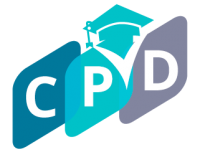Introduction:
Learning is a multifaceted process that involves engaging multiple senses to enhance understanding and retention. Multisensory learning, integrating visual, auditory, and kinesthetic techniques, has emerged as a highly effective approach to education. In this article, we’ll explore the benefits of multisensory learning and offer insights into how incorporating these techniques can significantly enhance the learning experience.
- Understanding Multisensory Learning: Multisensory learning involves the simultaneous engagement of multiple senses during the learning process. This approach recognizes that individuals have diverse learning styles and preferences, and incorporating visual, auditory, and kinesthetic elements accommodates this variability.
- Enhancing Memory Retention: One of the primary advantages of multisensory learning is its positive impact on memory retention. When information is presented through various sensory channels, it creates multiple pathways for the brain to encode and retrieve that information. This redundancy enhances the likelihood of long-term retention.
- Accommodating Different Learning Styles: Individuals have distinct learning styles, and some may prefer visual input, while others respond better to auditory or kinesthetic stimuli. Multisensory learning accommodates these differences, ensuring that information is presented in a way that resonates with diverse learning preferences. This inclusivity promotes a more equitable and effective learning environment.
- Visual Learning Techniques: Visual elements include images, charts, graphs, diagrams, and videos. Incorporating visual aids into learning materials helps learners better understand and remember information. Mind maps, infographics, and color-coded notes are effective tools for visual learners.
- Auditory Learning Techniques: Auditory elements involve hearing and listening. Podcasts, lectures, discussions, and audiobooks are examples of auditory learning techniques. For auditory learners, these resources facilitate comprehension and retention, allowing them to grasp information more effectively through hearing.
- Kinesthetic Learning Techniques: Kinesthetic or tactile learning involves physical engagement with the material. This can include hands-on activities, interactive simulations, and role-playing exercises. For kinesthetic learners, actively engaging with the subject matter through movement and touch enhances understanding and retention.
- Improving Focus and Engagement: Multisensory learning captivates learners’ attention by providing a variety of stimuli. The dynamic interplay of visual, auditory, and kinesthetic elements helps prevent monotony and boredom, leading to increased focus and sustained engagement with the material.
- Facilitating Conceptual Understanding: Multisensory learning aids in developing a deeper conceptual understanding of the material. By presenting information through various modalities, learners can connect abstract concepts with real-world examples, making complex topics more accessible and relatable.
- Promoting Active Learning: Active learning involves learners actively participating in the learning process. Multisensory techniques inherently encourage active learning by engaging students through discussions, interactive exercises, and hands-on activities. This participatory approach fosters a more immersive and memorable learning experience.
- Catering to Different Intelligences: Howard Gardner’s theory of multiple intelligences emphasizes the diversity of human intelligence, recognizing different ways individuals excel. Multisensory learning aligns with this theory by catering to various intelligences, whether linguistic, logical-mathematical, spatial, or bodily-kinesthetic, fostering a holistic approach to education.
- Boosting Confidence and Self-Efficacy: The varied nature of multisensory learning allows individuals to tap into their strengths and build confidence. When learners experience success through their preferred sensory channels, it boosts their self-efficacy and motivates them to tackle more challenging topics with greater confidence.
- Real-World Application of Knowledge: Multisensory learning facilitates the application of knowledge in real-world scenarios. By engaging with material through visual, auditory, and kinesthetic means, learners can connect theoretical concepts to practical situations, promoting a deeper understanding of how the information is relevant in everyday life.
- Creating a Supportive Learning Environment: Multisensory learning contributes to the creation of a supportive and inclusive learning environment. Recognizing and incorporating various sensory preferences fosters a sense of belonging for all learners, regardless of their individual strengths and challenges.
- Utilizing Technology for Multisensory Learning: Technology plays a pivotal role in implementing multisensory learning. Educational apps, virtual reality experiences, and interactive online platforms can seamlessly integrate visual, auditory, and kinesthetic elements, providing a rich and engaging learning experience.
Conclusion:
Multisensory learning is a powerful and inclusive approach that capitalizes on the richness of human perception and cognition. By incorporating visual, auditory, and kinesthetic techniques, educators and learners alike can create a dynamic and engaging learning environment. This approach not only enhances understanding and retention but also celebrates the diversity of learning styles and preferences. As we continue to explore innovative ways to educate and empower learners, the integration of multisensory techniques stands out as a cornerstone for effective and inclusive education in the 21st century.
